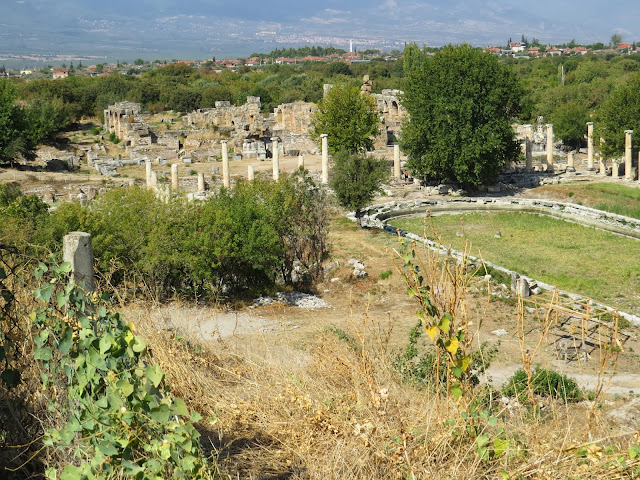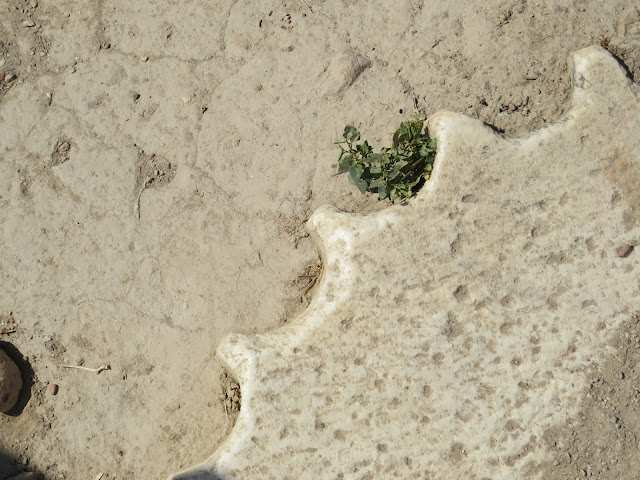The “small” city of Aphrodisias was dedicated to the goddess
Aphrodite, the patron goddess of the ceasars.
It was well established by the time Augustus adopted it as his chosen
city, because of its association with the goddess.
It was located near a marble quarry, which was a good thing,
given the extensive stone buildings.The city became famous not only for its construction of the marble, but also for the quality of the stone and carvers whose statues and other work was sought after in the ancient world. The excavation of the site was undertaken by NYU professor Kenan Erim, who made it his life's work. He is buried at the site.
While this is a large road with an impressive entrance, it was only a suggestion of what was to come.
These carvings, which may be from sarcophagi as well as other decorations, are remarkable because each one is different, and reflects a portrait of areal person.
This is backstage at the theater.
The theater would seat about 1700 people.
Many columns are broken off and serve as stepping stones.
From the coliseum we walked back toward the entrance to the city, the monumental gateway.
There was a museum containing many of the statutes and reliefs from the city.
And the cats were entertaining.
Below is one of an extensive series of reliefs of the life of Caesar, most of which appeared to be mythic.
Aphrodite on the half-shell.
And we were off to lunch, and the bus ride to Kushadesi.


























































No comments:
Post a Comment